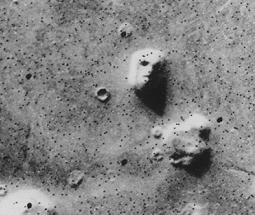The Total Lunar Eclipse of June, 15, 2011
2011 was a banner year for eclipses...we had 4 solar and 2 lunar eclipses. I wish we could have seen them. Sadly, all 6 eclipses were basically not observable from the United States. But many of our international friends got to see some amazing sights...and of the the eclipses this past year, the June 15th lunar eclipse was likely the most wonderful. It was a rare lunar eclipse where Moon passed through virtually the exact center of the Earth's shadow, making it not only a very long eclipse (the total duration was almost 6 hours!), but also one where the Moon took on a fabulous color.
The lunar eclipse of June 15, 2011 by Javier Algarra. Courtesy Astronomy Picture of the Day.
Atmospheric scientists can tell a great deal about the Earth's atmosphere from lunar eclipses. The reddish color of the Moon during a lunar eclipse is caused by sunlight bending through the Earth's atmosphere and striking the lunar surface even when it is in the shadow of the Earth. Usually only deep reddish light gets through, but depending on the various particulates found in the atmosphere of the Earth, the Moon may appear bright red, copper colored, and even a yellowish-orange. If you got to see this wonderful eclipse, count yourself lucky!
The Launch of Curiosity
It might seem odd to include a spacecraft launch in my list, but I can't help it. I'm excited! Another plucky robot has successfully made it off the Earth and is on its way to Mars. Launch is a dangerous time...second only in danger to landing. So Curiosity still has a long way to go before it can get to work...and the greatest danger lies ahead. Mars has been a tough planet to explore...about half of the missions headed there have ended badly. And yet, Mars is well worth the effort, as it is the place in the solar system most like the Earth. If life is, or ever was, present in the solar system beyond the Earth, Mars is the most likely place for it. The Spirit and Opportunity rovers have shown us definitive proof that Mars was wet in the past and likely still has a fair amount of water. Perhaps Curiosity will be able to provide definitive evidence of Martian life! If so, that will certainly make the list in 2012!
The launch of the Mars Science Laboratory rover, called Curiosity. Courtesy NASA.
The Uncookable Comet Lovejoy
A late entry - but an amazing one! Kreutz sungrazer Comet Lovejoy was discovered by Australia's Terry Lovejoy a bit less than a month before its close encounter with the Sun. No one expected the cosmic chunk of ice and rock to survive its passage a mere 87,000 miles above the solar surface (Earth is on average 93 million miles from the Sun and I can still get a sunburn in the winter!) on December 16. But as I write this, Comet Lovejoy is still kicking, headed away from the Sun and sporting an enormous tail. Sadly, we can't see it very well from here in the United States, but its discoverer is still getting a nice view! Southern hemisphere dwellers - get outside before the sunrise and enjoy the view of Comet Lovejoy in the east. It's well worth the effort!
Comet Lovejoy after its incredible solar encounter by Kosma Coronaios. Courtesy spaceweather.com
Pluto May Not Be a Planet...But it is a Moon Magnet!
First among dwarf planets Pluto was back in the news again this year - sporting a newly discovered moon. The intrepid Hubble Space Telescope was searching for rings around the tiny body, but instead discovered a fourth moon circling this enigmatic little world. Officially announced on July 20, 2011, little S/2011 P4 doesn't yet have a proper name. But its discovery confirms that this world, though no longer considered a major planet, will remain a target for scientific curiosity and discovery for years to come. New Horizons will arrive in 2015, increasing our understanding of the Plutonian system exponentially. I can't wait!
The discovery of Pluto's newest moon, S2011/P4. Courtesy STSci.
The End of an Era: NASA Retires the Space Shuttle
For 30 years, manned spaceflight was synonymous with the Space Shuttle. NASA's fleet of launch-like-a-rocket-land-like-a-glider spacecraft were amazing machines, completing 135 missions to space, launching innumerable satellites and spacecraft, conducting thousands of experiments, and performing 37 construction and service visits to the International Space Station. Groundbreaking mission like those of the Galileo spacecraft and the Hubble Space Telescope started with a launch from the cargo bay of a space shuttle. While we mourn the loss of the 14 astronauts who died in the Challenger and Columbia tragedies, we must also acknowledge that the shuttle's work record of 30 years is nothing short of extraordinary.
Space Shuttle Discovery. Courtesy NASA.
Now the United States has no manned spaceflight capability,. and the future of human exploration of space has never looked more bleak. No other space agency has the same level of experience which NASA has in manned spaceflight. But we will lose those skills rapidly if we can no longer send people into space to use them. While NASA is actively seeking new astronauts, I wonder what they will do, since they must rely on the faltering Russian space agency to successfully carry them into space. Human space exploration fires the imagination like few other things can, and the technological spinoffs from such efforts are too numerous to detail. I hope that our government will be willing to make an investment in a future they can't imagine now, and not let the problems of today kill the dreams of tomorrow.
I wish you all a wonderful holiday season full of family, friends, love and joy. And may 2012 be a truly stellar year for us all.
Carpe annum!
Kelly








